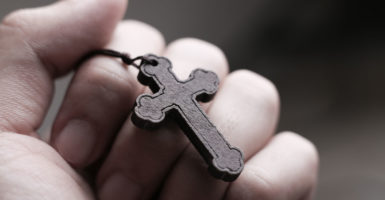For better or worse, the Supreme Court’s landmark decision in Burwell v. Hobby Lobby Stores, Inc. has probably influenced your view of religious freedom.
In that decision, the court ruled that the government could not force the Green family, the owners of Hobby Lobby, to pay for potentially abortion-inducing drugs in their health care plan in violation of their religious beliefs—particularly when the government had a less restrictive means of furthering its interest.
Some championed the court’s ruling as a much-needed reprieve from government overreach. Others claimed that the court made the concept of religious freedom into a sword for imposing religious beliefs, rather than a shield to protect religious minorities.
It’s been more than three years since the Hobby Lobby decision, and the effects of the decision are now clear: Religious freedom lawsuits remain quite scarce. And those that do occur are overwhelmingly to protect religious minorities.
My colleague Luke Goodrich, deputy general counsel at Becket, and I compiled and analyzed every religious freedom case in the 10th U.S. Circuit Court of Appeals—where the Hobby Lobby case was heard—over a five-year time period to identify the effect of Hobby Lobby. We just published the results.
We wanted to find out what religious freedom cases were coming before the courts, which religious groups were bringing those cases, and how successful the lawsuits were in protecting religious liberty.
The results might surprise you.
First, despite the significant airtime in the news media, religious freedom cases made up only 1.2 percent of all decisions. And half of those decisions involved religious claims by prisoners and individuals seeking asylum.
Of the remaining 0.6 percent of cases, the most common type of religious claims were—like Hobby Lobby’s—under the Religious Freedom Restoration Act.
The Religious Freedom Restoration Act is a bipartisan law passed in 1993 that says the government must have a really good reason to impose a law that restricts someone’s religious freedom, and if it does, the government must enforce it in the least restrictive way possible.
The remaining religious claims were under the free exercise and establishment clauses of the First Amendment, and Title VII, which prohibits religious discrimination in employment.
Looking closer the Religious Freedom Restoration Act lawsuits, over three-quarters of those lawsuits involved challenges to Obamacare’s contraceptive mandate, which required many employers to pay for contraceptives in their employee health plans.
Most of the remaining lawsuits were brought by Native Americans requesting the use of eagle feathers for sacred tribal rituals, and one involved a claim by drug smugglers over the possession of drugs.
If you look back even further, within the past 10 years, there were more cases involving access to eagle feathers by Native Americans, and a few more involving the use of drugs.
This suggests that the contraception mandate cases were an anomaly that occurred only in response to a specific governmental regulation that burdened specific religious beliefs. The more the government regulates various areas of life, the more likely its regulations will encroach on at least one religious group’s freedom of religion.
This is a reality many religious minorities face. For example, more than 60 percent of cases brought under the Religious Freedom Restoration Act involved Native Americans. This is not surprising given that the federal Bald and Golden Eagle Protection Act conflicts with the need among Native American tribes to use eagle feathers and eagle parts in religious ceremonies.
It should not be shocking that religious minorities, particularly Muslims and Native Americans, bring a disproportionately large share of religious freedom lawsuits because the government is more likely to overlook their unique needs.
Conversely, even considering the slew of contraception mandate cases, Christians bring relatively few religious freedom lawsuits compared with their share of the overall population. This directly contradicts the popular narrative post-Hobby Lobby that religious freedom cases predominantly involve large Christian groups.
It’s also important to note that courts have been successful at weeding out weak or insincere religious freedom claims, such as claims by drug smugglers. More than half of all religious freedom claims were rejected by the courts.
This low success rate dispels the myth that religious claims automatically win. If anything, religious freedom protections are underenforced, especially for religious minorities.
And perhaps most significantly, the same principles that protected Hobby Lobby also protect religious minorities, including the use of eagle feathers by Native Americans and religious beards for Muslim prisoners.
This demonstrates that the true effect of Hobby Lobby is the protection it provides for religious minorities. And that’s a good thing. Religious freedom for all is better than religious freedom for just the majority, or those the government happens to favor at the time.

























